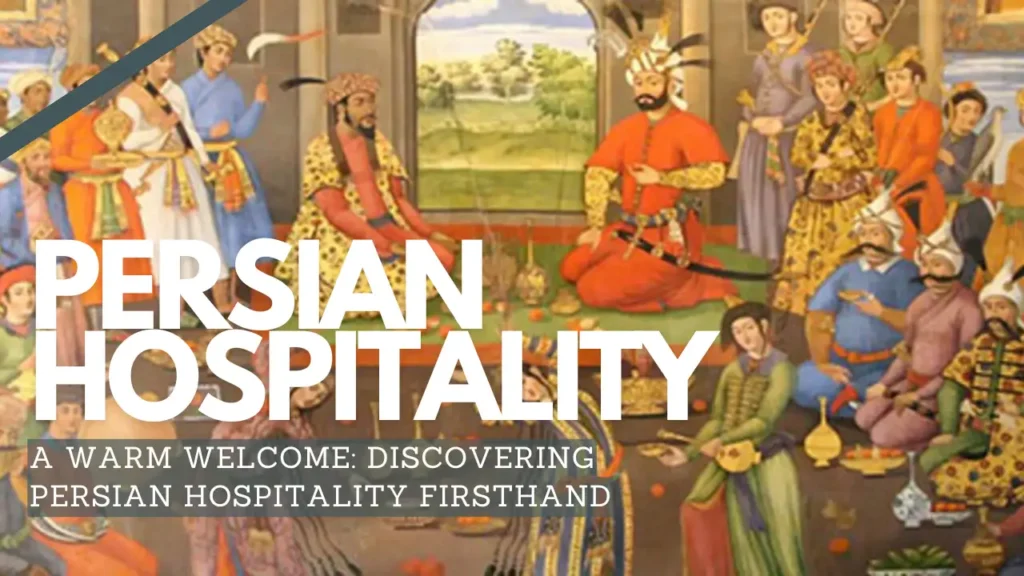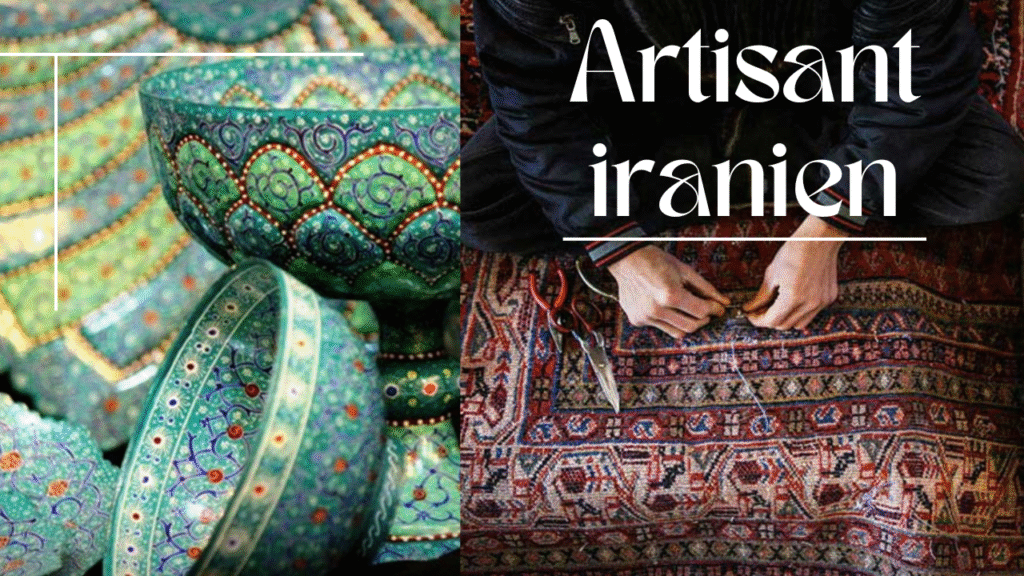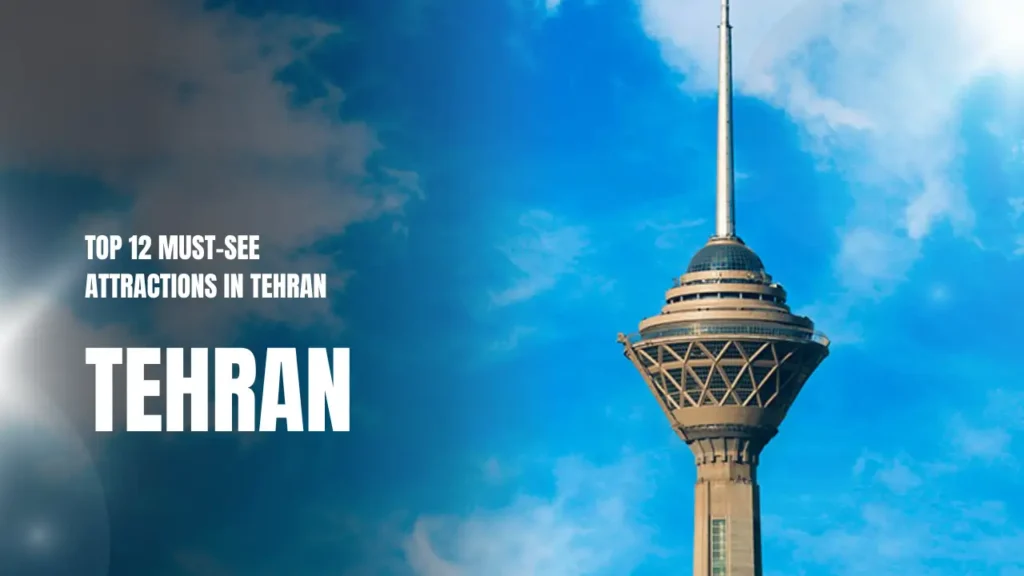What is Norouz? Explanation for non-Persians
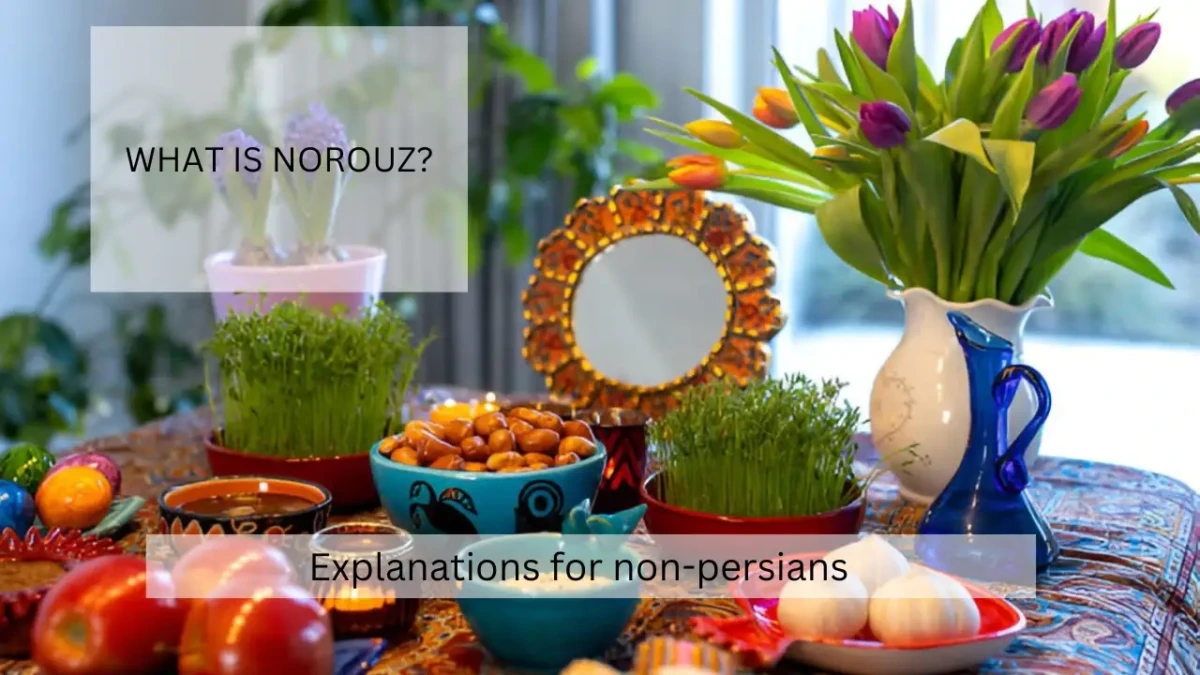
Nowruz: A Millennia-old Celebration of Renewal and Light
With the return of the fine days of spring, Nowruz is celebrated by millions of people all over the world, a colorful holiday with countless meanings: the Persian New Year. But beyond this simple occurrence on the calendar, Nowruz is also an expression of convergence, rebirth and renewal.
Bearing the imprint of the thousand-year-old roots that plunge to the very heart of the Zoroastrian era, this ancestral festival transcends the geography of the country and the religion of a people, reaching beyond cultures and customs, embodying rich traditions. Even for those unfamiliar with Persian traditions, Nowruz appears as a celebration of renewal and hope.
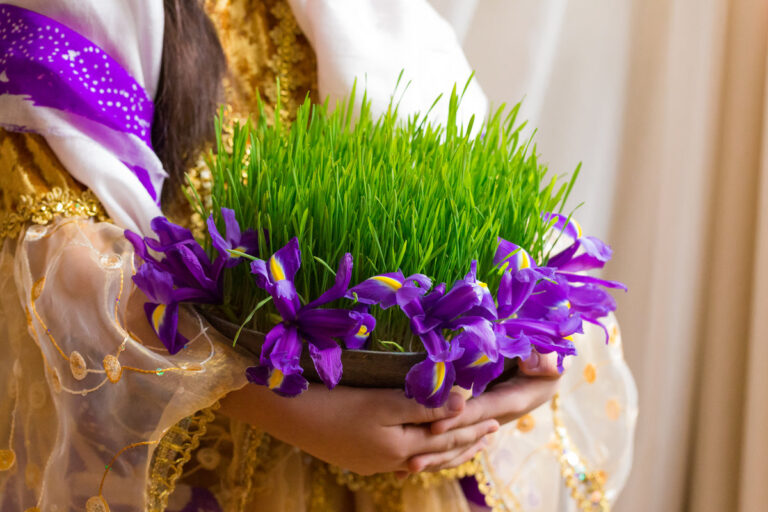
Liste des titres que vous trouverez dans cet article
The essence of Norouz: a universal festival
Nowruz (pronounced “no-rooz”), “New Day” in Persian, is a time of celebration closely linked to the date of the vernal equinox, which generally falls on March 20 or 21. It heralds the astronomical spring. This is the period when day and night are of equal length. This relationship with nature bears witness to the festival’s roots in agrarian societies. Its celebration is attested from Iran to Central Asia, the Caucasus, the Balkans, South Asia and diasporic communities.
Nowadays, the United Nations has included Norouz in its calendar of “International Days”, proclaimed as a symbolic message of peace and reconciliation when celebrated by different peoples; in particular Persians, Kurds, Afghans and Central Asians, each making their own local contribution to this common heritage.
A look back at the origins of Nowruz!
The origins of Nowruz date back over 3,000 years which is prior to the Achaemenid Empire along with roots in Zoroastrian traditions. Ancient Persian kings observed Nowruz within a view valuing nature’s cycles, light, renewal to establish divine reign; they revived great ancestral festivals plus ceremonies of symbolic places like Persepolis where inscriptions plus bas-reliefs record solemn moments. Nowruz thus became a cultural celebration transcending its strictly Zoroastrian framework. Persian traditions were strengthened. This occurred during the Sassanids. Islam’s arrival later brought preservation and transmission as it adapted while staying faithful to its spirit.
Rituals and traditions
The customs of Norouz combine symbolic rites and family activities, each carrying a strong message. Let’s take a look at some of the traditions that make this holiday so special:
1. Khaneh Takani
Spring cleaning: In the weeks leading up to Norouz, families engage in Khaneh Takani, or “moving the house”. With this symbolic spring-cleaning, the desire to eliminate negativity and make way for the new is expressed, while nature itself awakens to spring.
2. The Haft-Seen table
The essential element in the Norouz festival is the Haft-Seen table, a composition of seven objects all beginning with the Persian letter “S” (seen), each symbolizing a quality or component of the living world:
- Sabzeh (sprouted herbs): rebirth and vitality.
- Samanu (wheat pudding): power and strength.
- Seer (garlic): health.
- Seeb (apple): beauty and health.
- Senjed (dried oleaster fruit): love.
- Serkeh (vinegar): patience.
- Sumac: sunrise and the bittersweetness of life.
Each object on the table symbolizes an aspect of renewal, from fertility to beauty, from love to health. Other objects complete the initial display, such as goldfish (symbolizing life), mirrors (reflecting clarity) and candles (lights illuminating all places), but also sacred works or collections of poetry (Hafez’s Divan), whose spiritual and cultural connections are emphasized, so that memory does not fail.
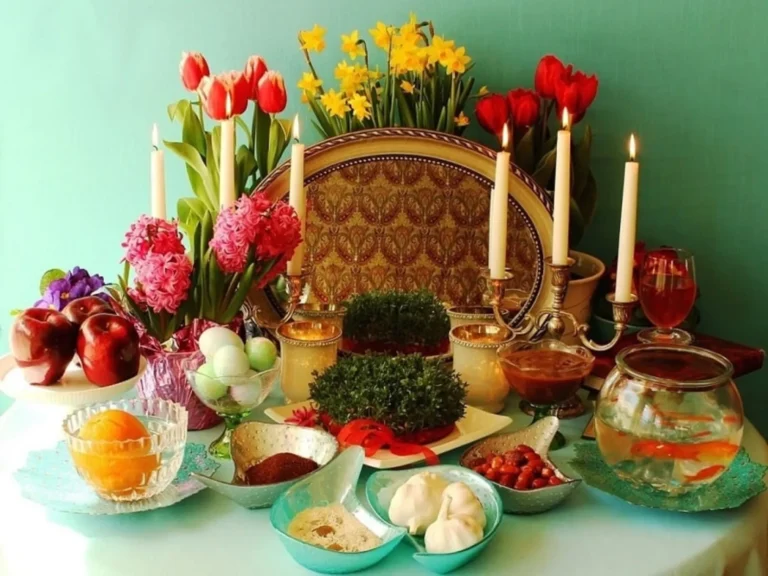
The Haft-Seen table
3. Chaharshanbe Suri: Welcoming fire
On the eve of the last Wednesday before Norouz, revelers jump over bonfires as part of Chaharshanbe Suri. This ancient Zoroastrian rite is a symbol of purification: participants chant “Give me your red and take away my yellow pallor”, a way of renewing vitality.
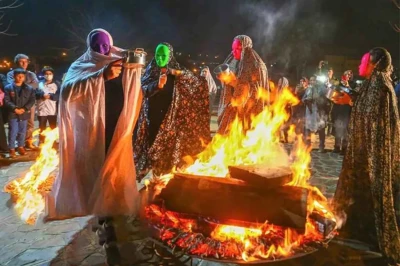
4. Visits to relatives
Norouz honors the community, especially the family: it’s traditional to visit the elders and exchange gifts, a sign of respect and renewed relationships, while the youngest receive an eidi, a small silver gift.
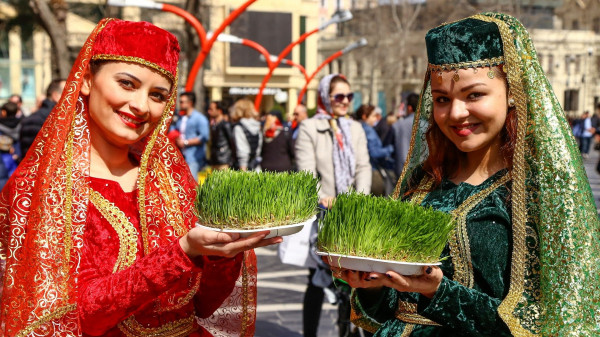
5. Sizdah Bedar: Living Nature
On the 13th day of Nowruz, Sizdah Bedar takes place outdoors, demonstrating a return to and protection of nature. Families do not hesitate to picnic and play around their Sabzeh, which they release into the rivers, thus completing the great circle of renewal. The tradition involves purifying the home before picnicking on the 13th day of Nowruz in order to take advantage of the renewal of nature and to throw away the lentil or wheat shoots that were part of the Haft-Seen table, thus symbolically ridding the house of “evil spirits.”
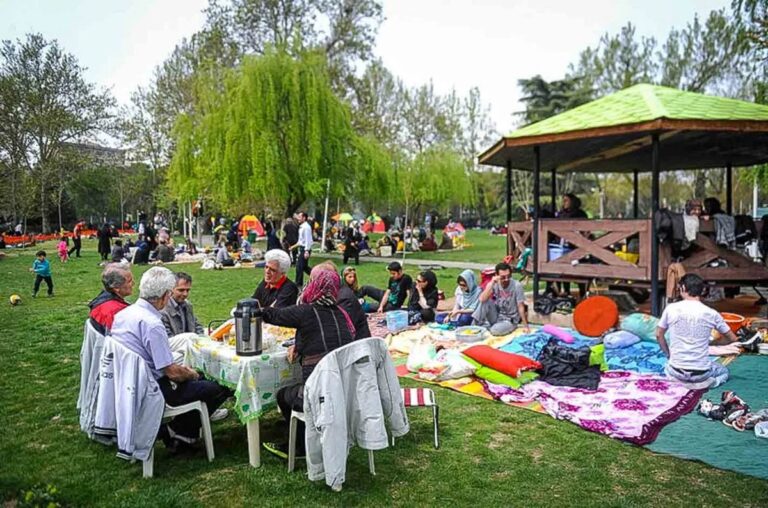
A living tradition in a modern world
Even today, Nowruz is still very much alive. Families around the world communicate via videoconferencing, and festivities in major cities may take the form of international fairs, concerts and Haft-Seen, blending regional and creative influences, but the heart of the celebration – respect for life and rebirth – remains the same.
Nowruz in Iran lasts for two weeks, a rare national break, punctuated by festivities in the cities of Tehran and Isfahan, becoming places of celebration, with decorations, firecrackers and bustling activity in the bazaars
Global impact and universal values
The great appeal of Nowruz lies in the renewal, unity and harmony it evokes in universal terms. It reminds us that we are all united by the cycle of the seasons and the joy of rebirth, all the more so as it is through the diversity of its origins that people find a shared sense of belonging. The worldwide craze for this event, as well as the recognition of Norouz as a UNESCO intangible world heritage site, are a sign of this universal interest.
Experience Norouz for yourself
Would you like to experience Norouz? Meet the Persian or Central Asian communities who often host open festivals of music, dance and cuisine, where participation is not just a cultural exchange, but also a celebration of our humanity, because the idea of celebrating renewal seems to be universal.
Conclusion
Norouz is not just a festival, it’s a reflection on the past and the new, a celebration of unity through its dazzling rituals and splendid themes. Norouz can appeal to all tastes. And this spring, let’s dare to be inspired by the spirit of Nowruz to celebrate the renewal of life and the solidarity that unites us all. A new day should be welcomed. Every Nowruz is ultimately a hymn to hope and humanity.
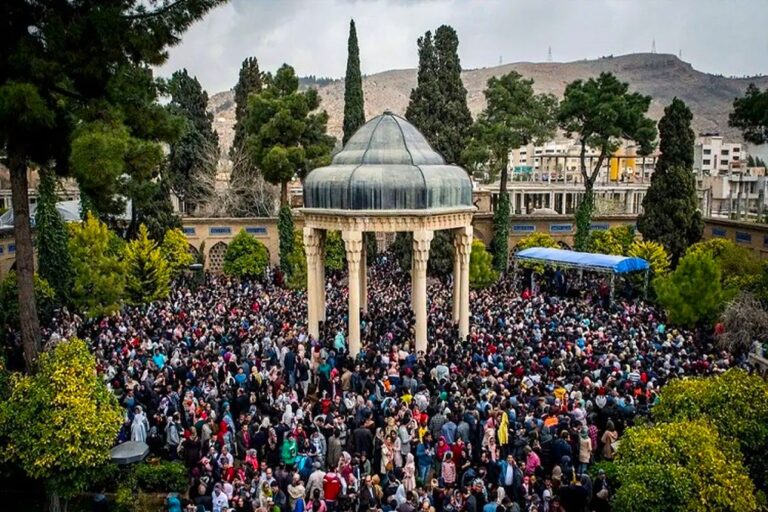
The tomb of Hafez in Norouz

